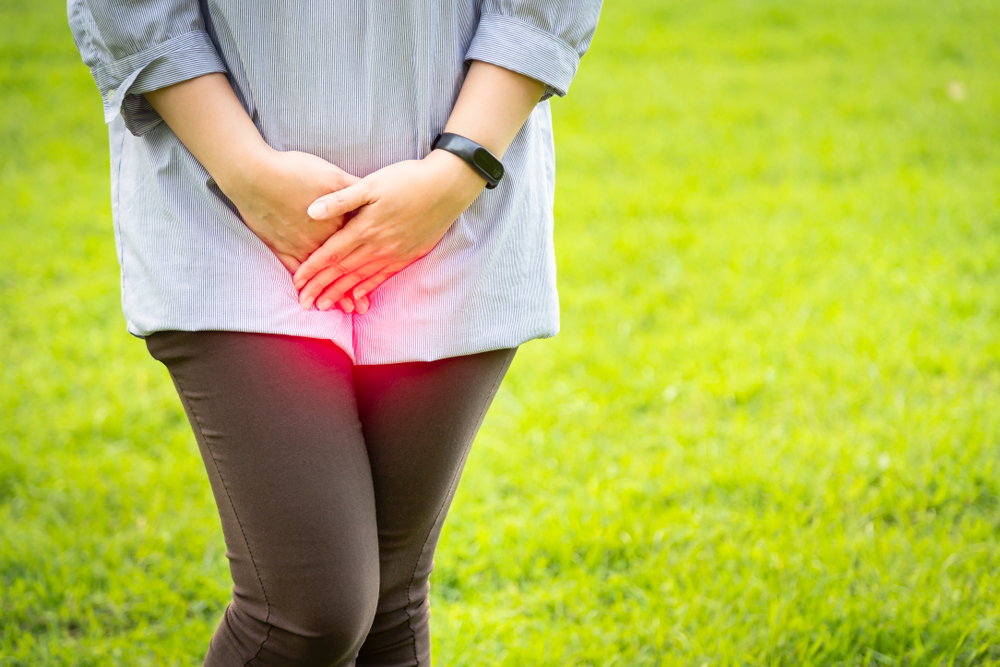A urinary tract infection (UTI) is an infection in any part of the urinary tract:
- Kidneys – Infection in kidney(s) (Pyelonephritis), where urine is produced.
- Ureters – Infection in the tubes that take urine from the kidneys to the bladder
- Bladder – Infection in the bladder (Cystitis), where urine is stored.
- Urethra – Infection in the tube that empties urine from bladder to the outside (Urethritis)
UTIs usually involve the urethra and bladder, but can spread to the kidneys if left untreated.
Epidemiology
The lifetime incidence of urinary tract infections (UTIs) is 50−60% in adult women. The prevalence of bladder infection increases with age (i.e. in women aged over 65, it is approximately double the rate seen in the overall female population). Community-acquired UTIs affect more than 150 million people annually.
Causes and risk factors
The most common bacteria responsible for UTI is Escherichia coli. E. coli resides naturally in the gastrointestinal tract but may pass inadvertently from anus into urethra (then bladder) during bowel movement, especially in females where the urethra is shorter.
There are also other risk factors for UTI, those which promote bacterial growth, as well as those affecting urinary tract function.
Factors promoting bacterial growth
- Menopause: Decline in circulating estrogen causes changes to vagina flora and acidity predisposing to dryness, discomfort and UTIs
- Diabetes: Increased sugar in the blood passes into urine, which promotes the growth of bacteria
- Use of urinary catheter
- Poor immune system
- Lack of fluid intake: Reduced urination, resulting in bacteria not being flushed away
- Sexual activity: Bacteria can travel up urethra into bladder during intercourse, especially in females due to a shorter urethra. Spermicides may cause skin irritation and encourage entry of bacteria into bladder
Factors affecting urinary tract function
- Conditions affecting bladder function
- Multiple sclerosis, Parkinson’s disease and many neurological conditions impair emptying of bladder
- Constipation: Large amounts of stool in the colon can put pressure on the bladder and hamper emptying of urine.
- Pregnancy: Growing fetus presses on the bladder, may result in incomplete emptying of the bladder during urination.
- Use of diaphragm (contraceptive) may put pressure on a woman’s urethra and reduce bladder emptying
- Immobility/prolonged bed rest can cause urinary stasis in bladder.
- Urine retained in bladder predisposes to infection.
- Structural abnormality in the urinary tract due to birth defects or injuries during surgery.
- Ageing
- Obstruction of the urinary tract
- Kidney stones in the kidneys/ureters
- Enlarged prostate – Older men tend to develop this; the prostate is a gland involved in semen production at the bladder neck (Diagram 1). Enlargement chokes off the bladder neck where the urethra connects; urine cannot flow freely leading to retention in bladder and increased risk of UTI.
Signs and symptoms
- Pain or burning when urinating
- Cloudy urine or blood in urine
- Urinating more often than usual
- A frequent sensation of having to urinate, “urgency”
- Foul-smelling urine
- Cramping pain in the lower abdomen
- Mid-back pain.
If the pain is associated with infection in the kidneys, this pain will be persistent regardless of any position or activity.
Diagnosis
Diagnosis of UTI involves a urinalysis. This is a test performed on a sample of urine to check for the presence of white blood cells, red blood cells, nitrates, bacteria, etc. Urine culture is also done to determine the type of bacteria in the urine causing the infection. After detecting the causative agent, antibiotic sensitivity is done to determine which antibiotic will best treat the infection.
Treatment of Urinary Tract Infection
The mainstay of treatment of UTIs is plenty of fluids with prescription medications to kill the bacteria, and medications that relieve pain and burning.
1. Medications
- Oral or intravenous (thru veins) antibiotics may be prescribed depending on severity of the UTI. These kill the bacteria that are causing the bladder infection.
- Urinary alkalinisers may be given for relief of pain and burning sensations.
- For recurrent UTIs, different preventive treatments may be given e.g.:
- Daily antibiotic therapy
- Single dose of antibiotic post-coitus if UTIs are related to sexual activity
- Topical vaginal estrogen therapy in postmenopausal women; relieves dryness and normalizes vaginal flora (Lactobacillus is allowed to thrive to fend off bad bacteria)
2. Home treatment
- Drink plenty of fluids to help flush the bacteria out of the bladder. Water is the best choice of fluid because it is free of caffeine and artificial sweeteners, which are known as bladder irritants
- Concentrated cranberry solutions, juices, and extracts have been shown in some research to be helpful in averting UTIs as they contain A-type proanthocyanidins (PACs) which prevent bacteria from adhering to bladder walls.
3. Lifestyle changes
- Drink six to eight glasses of water a day.
- Urinate as soon as you feel the urge otherwise bacteria are allowed to grow in the bladder if urine is retained in it for extended periods of time.
- Wipe from front to back after urinating and bowel movements, especially if you are female.
- Avoid the use of douches, feminine hygiene sprays, scented soaps, or powders as the chemicals may irritate the urethra and bladder.
- Urinate before and after sexual activity to flush away bacteria that may have entered the urethra during sex.
- Take showers instead of baths; also avoid lounging around in wet bathing suits for long.
- Always wear clean, dry and breathable cotton underwear.
- Avoid wearing tight-fitting bottoms frequently; lack of ventilation and trapped moisture can allow bacteria to breed.
Complications of Urinary Tract Infection
Untreated UTIs can lead to:
- Kidney infection and damage
- Increased risk of premature infants of low birth weight in pregnant women with UTI.
- Sepsis i.e. systemic spread of infection into the bloodstream, that is life-threatening.
Conclusion
UTIs are a common infection. However, they can be prevented by adopting certain healthy habits and lifestyle measures. They are also easily managed, but can lead to adverse complications if left untreated.












